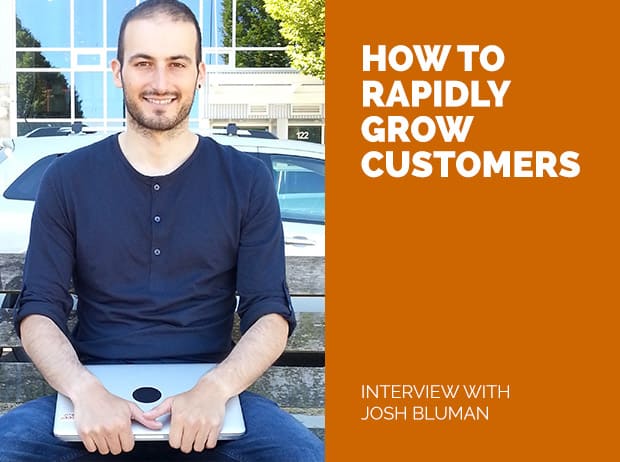Imposter syndrome can do major damage to your professional life. Practice these tips and you’ll have more confidence to apply for lucrative high-profile gigs now.

Do you ever feel like you don’t deserve all the professional success you’ve earned?
If you ever face self-doubt, insecurity, or worry about higher-ups discovering you’re not as awesome as they think you are, you may be suffering from imposter syndrome.
And this severe lack of confidence can really damage your career goals.
What is Imposter Syndrome?
Imposter syndrome (IS) was first identified in 1978 by psychologists Pauline Rose Clance and Suzanne Imes[*].
They defined IS as believing you’ve only been successful in your career due to good luck and circumstance rather than your talent, experience, and qualifications.
One report estimates up to 70% of professionals will experience imposter syndrome in their professional life at least once[*].
IS can affect men and women equally and can manifest either early on in your career or well down the line[*].
Here’s what to look for:
Signs You May Have Imposter Syndrome
Imposter syndrome can be generally defined as not being able to own your success and accomplishments.
It frequently shows up as:
- Feeling unworthy of your accomplishments, salary, accolades, or high-profile job title
- Fear of being discovered as a fraud or fake
- Thinking your success only comes from luck
- Believing you could do better
- Not being able to take a compliment
- Downplaying your achievements
- Fearing you’re charging too much for your work/services

What’s frustrating here is even though you may be wrestling with these demons, there’s no evidence any of these fears are true or legit.
And that disconnect may be keeping you from leveling up your design and marketing career.
How Imposter Syndrome Damages Your Professional Life
People with imposter syndrome:
Strive for unrealistic perfectionism. Even though you may set high expectations and accomplish 99% of your job perfectly, if you mess up even in the smallest way you start doubting your skills and abilities completely with IS.
Feel as if they must be experts. If you have IS, you may constantly seek out training and certifications to level up your design and marketing skills and prove you’re capable and knowledgeable in your field.
But this may also prevent you from applying to certain jobs just because you’re missing one small qualification or believe you’re not “good enough” to succeed in that role.
May give up when work gets tough. Those with natural talents and abilities don’t have to work hard at tasks that come easily to them.
However, if you encounter a situation where you must put in more effort, you may feel inadequate or like an imposter because the work doesn’t come as easily or naturally as you’re used to.

Tend to use solo mentality. Sometimes when you have IS, you get caught up in thinking you must do everything on your own to prove your worth rather than relying on team members for their assistance.
Add extra work pressure to their plates. You may overcompensate for feeling inadequate by working harder than everyone else on your team or in your department.
You may think this protects you from being discovered as the weak link you fear you are, but striving to prove this causes stress and unhealthy work relationships.
It can also force you into becoming a workaholic and damage your relationships with your family and friends too.
So what’s the cure for imposter syndrome?
How to Overcome Imposter Syndrome
Imposter syndrome will hold you back from accomplishing your professional goals.
So whether you want to become a killer digital strategist, negotiate a higher salary, or stand out in a crowded design market, you can overcome IS when you:
Realize When You’re Falling Into IS Patterns
Instead of letting your thoughts take over and feed the imposter syndrome cycle, identify them when they creep up so you can counteract the way they make you feel and behave.
By not ignoring these, or giving in to them, you’ll be able to put your feelings in perspective and ask yourself whether they’re helping or hurting your day/project/career.
And that may require you to…
Think Realistically
Honestly, is there ever a flawless work project? Or an employee who’s never made a mistake?
These don’t exist in the real world.
So if you’re setting unrealistic expectations for yourself or your projects, you’re always going to feel unworthy for not meeting them (even though they were impossible goals anyway).

The sooner you focus your effort on continual improvement and not perfection on the first try, the faster you’ll be able to think on your feet when issues do come up.
Rather than feeling as if you’ve let yourself down, you can accomplish more by solving these problems and increasing your productivity.
And if you do make a small error, go easy on yourself like you’d give your best friend a break for doing the same.
Talk to Yourself As If You Were Talking to Your Best Friend
Whenever you’re feeling imposter syndrome rear its ugly head, think about what you would tell your best friend to help them out of the weeds if they were in the same boat.
While you may internally beat yourself up over a mistake, chances are you’d give your best friend a pep talk and remind them how amazing they truly are and that no one’s perfect.
So be your own best advocate and remind yourself of these facts too.
And if you can’t tell yourself these truths, let your best friend do it.
Or Actually Talk to Your Best Friend
Don’t isolate yourself when you’re feeling less than shiny about your work life.
Connect with your support network and they’ll be able to address your feelings of insecurity and let you know how irrational they are in reality.

Having someone you respect and admire boost your confidence by reminding you of all your strengths and abilities will give you the push you need to dominate your career goals.
And since your friends love you for who you are, they’ll also show you that your self-worth is not tied to your projects’ success or fail rate.
Stop Comparing Yourself to Others
People suffering from imposter syndrome only feel less than adequate because they’re constantly measuring themselves up against other successful high achievers.
High achievers are used to competing with others and being rewarded for coming out on top.
But when you’re constantly comparing yourself to others, you’ll always fear others are doing better than you are or are accomplishing greater goals. You never see their struggles or missteps even though they certainly exist.
Set your own professional (and realistic) goals and only hold yourself accountable to those.
And when you do reach these milestones, don’t forget to make a note.
Keep Reminders of All You’ve Already Accomplished
Most feelings of imposter syndrome stem from a lack of pats on the back — not just from upper management and your boss, but from your inner critic.
Keep track of your professional accomplishments by adding each achievement to your portfolio or updating your LinkedIn profile to reflect these big wins.
If you want to keep a career journal detailing these milestones, make sure to also note any network connections who may have helped you, good luck on your side, and any other factor you may attribute your success to.

A mental refresh through these times or physically scrolling through your social media portfolio for work will help you recognize your own talent. And you can take time to reflect on the long road you walked to get where you are today.
You’ll also find luck and other coworkers probably only played a small role in your achievement when all is said and done.
Practice Owning Your Greatness
You may not totally rid yourself of imposter syndrome, but the more you practice these skills, the faster you’ll be able to pull yourself out of an IS rut and get back to being awesome.
Once you feel amazing about yourself again, you may have the confidence to go after a promotion or apply for that high-profile marketing or design job you never thought you’d be good at (but will totally crush).





























